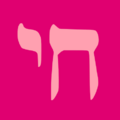Jewitchery facts for kids
Jewitchery is a modern spiritual path that blends ideas from Judaism with practices often found in Wicca or other nature-based spiritual traditions. It began to take shape in the 1970s as part of the wider New Age movement, which explored different ways of thinking about spirituality and personal growth.
Contents
What is Jewitchery?
Jewitchery combines elements from Jewish culture and religion with practices from Witchcraft or Paganism. People who follow Jewitchery often feel a connection to both their Jewish heritage and to nature-focused spirituality. They might explore ancient Jewish texts and traditions while also celebrating the cycles of the Earth and the seasons.
How it Blends Traditions
This spiritual path brings together different ideas. From Judaism, it might include celebrating holidays like Passover or Rosh Hashanah, studying the Torah, or using Hebrew prayers. From nature-based spirituality, it might involve practices like meditation outdoors, honoring the moon cycle, or using herbs and crystals.
Connecting with Heritage and Nature
Followers of Jewitchery often seek to find deeper meaning in their Jewish roots. They might also want to connect more with the natural world and its energies. It's a way for people to create a spiritual path that feels personal and meaningful to them.
History of Jewitchery
Jewitchery emerged during the 1970s and 1980s. This was a time when many people were exploring new spiritual ideas. The New Age movement encouraged individuals to look beyond traditional religions. It also promoted personal spiritual journeys.
Roots in Feminist Spirituality
A big part of how Jewitchery grew was through the feminist movement. Many women were looking for spiritual paths that honored the divine feminine. They wanted to find ways to connect with powerful female figures. This led some Jewish women to explore ancient Jewish traditions. They looked for ways to combine them with goddess-centered practices.
Early Communities and Ideas
At first, Jewitchery was often practiced in small groups. People shared ideas and rituals. They explored how Jewish holidays could be celebrated with a focus on nature. They also looked at how ancient Jewish texts could be understood in new ways. This helped the ideas of Jewitchery spread among those interested.
Beliefs and Practices
People who follow Jewitchery have many different beliefs and practices. There is no single rulebook. Instead, individuals create their own unique spiritual journey. They often draw from both Jewish and nature-based traditions.
Celebrating Holidays
Many Jewitches celebrate traditional Jewish holidays. However, they might add their own unique twists. For example, during Passover, they might focus on themes of freedom and renewal. They might also connect these ideas to the changing seasons. They might also celebrate Shabbat, the Jewish day of rest. They could use this time to connect with nature or meditate.
Rituals and Symbols
Rituals in Jewitchery can include many things. They might involve lighting candles, singing, or telling stories. People might also use symbols from both traditions. For example, they might use the Star of David alongside symbols of the Earth or moon. The Chai symbol, which means "life" in Hebrew, is also important.
Personal Connection
The main goal for many in Jewitchery is to find a deep, personal connection to the divine. They want to feel connected to their heritage and to the world around them. It is a path that allows for creativity and individual expression in spirituality.
Images for kids


